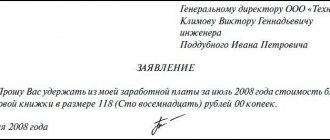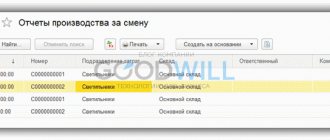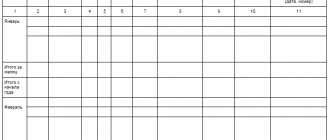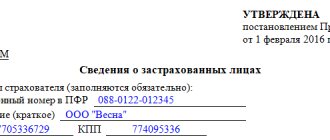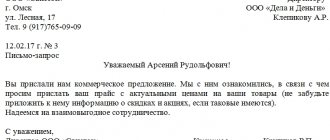VAT return: transaction type codes 2020 | Contour.VAT+
As you know, transaction type codes are used when filling out the Purchase and Sales Books, as well as the Journal of Received and Issued Invoices.
From the beginning of the year, the data from these registers is included in the VAT return and submitted for verification to the tax office. Based on these codes, the Federal Tax Service compares the company’s deductions with the tax paid in the counterparties’ declarations.
Therefore, it is extremely important to indicate the codes correctly. We will consider the main issues of their application in this article.
Coming Changes
In its letter dated January 22, 2020 N ГД-4-3/ [email protected] the Federal Tax Service stated that work is underway to compile a new list of codes for types of transactions, the need for which is due to changes made to the VAT legislation.
But so far the order approving the new codes has not been signed. Perhaps this will be done before the deadline for filing the next return, and then the tax service will additionally inform taxpayers about the need to use new codes.
Procedure for applying codes
In the meantime, in their declarations for 2020, companies indicated old codes approved by order of the Federal Tax Service of Russia dated February 14, 2012 No. ММВ-7-3/ [email protected] , as well as 13 new ones recommended by tax authorities in the mentioned letter N ГД-4-3/ [ email protected] The latter were introduced because the old codes do not fully reflect the essence of some business transactions.
Additional codes recommended by the Federal Tax Service describe, for example, the preparation or receipt of an adjustment invoice, the purchase of services issued with strict reporting forms, the preparation of primary documents when selling goods (services) to VAT non-payers and many other situations.
These codes have indexes from 16 to 28 .
If new codes are more suitable for any business transactions, it will be safer to recode them. Otherwise, situations may arise in which Federal Tax Service specialists will ask for clarification.
For example, a product purchased by a company using the simplified tax system was returned to the supplier. In this case, the seller claims a tax deduction, but his counterparty is not a VAT payer. If such a transaction is indicated under code 03, the declaration may not be reconciled.
It is more correct to indicate for this operation code 16 “Receipt by the seller of goods returned by a buyer who is not a value added tax payer, with the exception of transactions listed under code 17.”
This and other operations that need to be recoded will be discussed further.
Import
According to the old rules, all operations for the import of goods into Russia were designated by the code 01.
However, the seller of such goods does not pay VAT, and the supplier can claim a deduction, so it is safer to use the new codes. There are two of them:
- 19 — imports from the countries of the Eurasian Union - Belarus, Kazakhstan and Armenia;
- 20 — import from other countries.
Purchase returns
If the buyer is a VAT taxpayer, then when returning the goods the code will still apply 03.
In other cases, you need to use new codes:
- 16 — if the goods were returned by a company or individual entrepreneur who is not a VAT taxpayer;
- 17 - if the goods were returned by an individual.
Adjustment invoices
When issuing or receiving an adjustment invoice, you should now use code 18 rather than 01 as previously.
Refusal of invoices
As you know, an agreement can be drawn up with buyers who do not pay VAT to waive invoices. Then this type of “primary” will disappear from the document flow with such a counterparty. Operations carried out with it should be marked with code 26 , and not 01, as should have been done before.
Operations executed using strict reporting forms
For some types of transactions, you can claim a deduction not on the basis of an invoice, but on the basis of strict reporting forms. This mainly concerns travel expenses - travel, hotel accommodation, etc. Previously, code 01 was used for such operations, but now there is a personal code for them - 23.
Sale of goods to individuals
When selling goods at retail, it is necessary to reflect in the Sales Book a summary document for the period - a report or accounting certificate. Such an operation must be completed using code 26 . The same applies to receiving an advance from a “physicist”. In this case, the buyer’s TIN does not need to be indicated.
For clarity, here is a table that summarizes all the operations that need to be recoded:
OperationOld codeNew code
| IN THE SALES BOOK | ||
| Receiving an adjustment invoice due to a decrease in the value of goods | 01 | 18 |
| Transfer of property to the authorized capital, use of goods for transactions not subject to VAT, etc. | 01 | 21 |
| Sale of goods to VAT evaders who refused invoices, as well as to “physicists” | 01 | 26 |
| IN THE PURCHASE BOOK | ||
| Return of goods from a buyer who does not pay VAT | 03 | 16 |
| Return of goods from a “physics” buyer paid in cash | 03 | 17 |
| Drawing up an adjustment invoice due to a decrease in the cost of goods | 01 | 18 |
| Import of goods from the countries of the Eurasian Union (Belarus, Kazakhstan, Armenia) | 01 | 19 |
| Import of goods from other countries | 01 | 20 |
| Refund of advances to buyers upon change or termination of the contract, deduction of VAT previously paid on the advance on the date of shipment | 02 | 22 |
| VAT deduction on travel expenses (on tickets, invoices and other strict reporting forms) | 01 | 23 |
| Deductions for export goods | 01 | 24, 25 |
What can't be changed
Well, in conclusion, let us recall the previous codes that correspond to operations that do not require recoding.
No. Name of the type of operation Code of the type of operation
| 1 | Shipment (transfer) or acquisition of goods, works, services (including intermediary services), property rights, with the exception of transactions listed under codes 03, 04, 06, 10, 11, 13 | 01 |
| 2 | Payment, partial payment (received or transferred) for upcoming deliveries of goods (performance of work, provision of services (including intermediary services)), transfer of property rights, with the exception of transactions listed by codes 05, 06, 12 | 02 |
| 3 | Return of goods by the buyer to the seller or receipt by the seller of goods returned by the buyer | 03 |
| 4 | Shipment (transfer) or acquisition of goods, works, services (except for intermediary services), property rights on the basis of a commission agreement (agency agreement, if the agent acts on his own behalf), with the exception of transactions listed under code 06 | 04 |
| 5 | Payment, partial payment (received or transferred) for upcoming deliveries of goods (performance of work, provision of services (except for intermediary services)), transfer of property rights based on a commission agreement (agency agreement, if the agent acts on his own behalf) , with the exception of operations listed under code 06 | 05 |
| 6 | Operations performed by tax agents listed in Article 161 of the Tax Code of the Russian Federation (Collected Legislation of the Russian Federation, 2000, No. 32, Art. 3340; 2011, No. 50, Art. 7359) | 06 |
| 7 | Operations listed in subparagraph 2 of paragraph 1 of Article 146 of the Tax Code of the Russian Federation | 07 |
| 8 | Operations listed in subparagraph 3 of paragraph 1 of Article 146 of the Tax Code of the Russian Federation | 08 |
| 9 | Receipt of the amounts specified in Article 162 of the Tax Code of the Russian Federation | 09 |
| 10 | Shipment (transfer) or receipt of goods, works, services, property rights free of charge | 10 |
| 11 | Shipment (transfer) or acquisition of goods, property rights listed in paragraphs 3, 4, 5.1 of Article 154, in subparagraphs 1 - 4 of Article 155 of the Tax Code of the Russian Federation | 11 |
| 12 | Payment, partial payment (received or transferred) for upcoming deliveries of goods, transfer of property rights listed in paragraphs 3, 4, 5.1 of Article 154, in subparagraphs 1 - 4 of Article 155 of the Tax Code of the Russian Federation | 12 |
| 13 | Carrying out capital construction, modernization (reconstruction) of real estate by contractors (developers or technical customers) | 13 |
Source: https://kontursverka.ru/news/deklaraciya-po-nds-kody-vidov-operacij-2015
When are they used?
The coding system established by the Federal Tax Service of the Russian Federation is applied in the following cases:
- When filling out the purchase book.
- When filling out the sales book.
- On additional sheets for both books.
- When maintaining a log of received and sent invoices.
Accordingly, codes are entered into the invoice based on entries in other documents.
There is no need to issue an invoice (and apply coding):
- If the shipment took place no later than 5 calendar days from the date of receipt of the advance payment (letter of the Ministry of Finance of the Russian Federation No. 03-07-09/1695 2020).
- If the buyer, by law, does not pay VAT (clause 1, clause 3, article 169 of the Tax Code of the Russian Federation).
- Export of goods at a rate of 0% (clause 1 of Article 154 of the Tax Code of the Russian Federation, letter of the Ministry of Finance of the Russian Federation No. 03-07-08/142 2020).
Codes for types of VAT transactions
Enterprises and individual entrepreneurs working with VAT and reporting on this tax operate with special codes indicating the conduct of a particular taxable transaction, and record them both in accounting registers and in the tax return. Types of transactions codes (KVO) for tax accounting registers were approved by order of the Federal Tax Service dated March 14.
2016 No. ММВ-7-3/ [email protected] Their list is periodically updated with the introduction of new ciphers. To reflect codes in documents, special columns are provided: No. 2 in the sales/purchase books, No. 3 in the invoice journals.
In 2020, the cipher registry has changed slightly, some of the used codes have been canceled, others have been added, and others have been detailed.
Correctly indicating the CVO when documenting transactions is very important, since information from the registers is transferred to the declaration and analyzed by tax authorities. KVO denotes the type of operation and characterizes the algorithm for issuing invoices and calculating VAT.
For example, when deducting VAT on a transaction confirmed by the BSO, code 23 is indicated. When checking, the IFTS software resource recognizes that invoices are not registered using this code. An error in specifying the KVO will establish a discrepancy, and the Federal Tax Service will request an explanation.
True, the law does not provide for the imposition of penalties for such inaccuracies.
VAT return: transaction type code
The Tax Code of the Russian Federation also applies the concept of “transaction code” when filling out a VAT return. These codes, unlike the two-digit ones used when registering accounting registers, consist of 7 digits and are given in Appendix No. 1 to the Federal Tax Service order No. MMV-7-3 dated October 29, 2014 / [email protected]
There are many CVOs, each of them describes a category of transactions with its characteristic tax features. For example, the provision of services for the international transportation of goods in the declaration is encrypted with code 1010423, which combines the group of operations listed in paragraphs. 2.1 clause 1 art. 164 NK.
Often, enterprises and individual entrepreneurs operating under special regimes (STS, UTII, PSN) issue invoices in order to provide the purchaser with a VAT deduction. In such a situation, “simplified” people pay tax and register the issued invoices in section 12 of the VAT return. This section is not intended to reflect the VAT quotas, and therefore the codes for these transactions are not indicated in it.
We will return to the codes in the accounting registers and consider the applicable codes for the types of VAT transactions in 2020.
Books of purchases and sales: codes of types of VAT transactions
Based on the above norms, taxpayers use the following codes for recording in accounting registers:
| Cipher | Operation designation |
| 01 | Transaction type code 01 denotes the sale or purchase of goods (works, services), incl. by attracting an intermediary, drawing up a clarifying invoice, as well as VAT on construction and installation work in an economic way when constructing structures for one’s own needs or transferring property to the management company of the company |
| 02 | Transaction type code 02 reflects full or partial payment for future supplies, incl. under agency agreements |
| 06 | Transaction type code 06 – transactions carried out by tax agents (TA) |
| 10 | Free transfer of property (provision of services, performance of work) |
| 13 | Contract capital construction, reconstruction, purchase of similar works by investor companies |
| 14 | Transfer of property rights (clauses 1-4 of Article 155 of the Tax Code of the Russian Federation) |
| 15 | Registration of the SF for sale by the commission agent on his own behalf |
| 16 | Return of goods |
| 17 | Return of goods by private individuals (if the contract is terminated, the advance payment will be returned) |
| 18 | VAT transaction type code 18 is indicated when registering/receiving an adjustment tax return to reduce the cost of supplied inventory items (works, services) or their volume indicators |
| 19 | Import to the Russian Federation from EAEU states |
| 20 | Import to the Russian Federation and other territories under federal jurisdiction in the customs procedure for consumption within the Russian Federation, temporary import and processing outside the customs territory |
| 21 | Transaction type code 21 – VAT restoration in certain situations (for example, when receiving inventory items on account of an advance payment, further use of assets in non-VAT-taxable transactions), or operations at a rate of 0% (clause 8 of Article 145, clause 3 (except for clause 1, 4) Article 170 and 171.1NK) |
| 22 | Transaction type code 22 – return of advances (clause 5 of Article 171 of the Tax Code), deduction of VAT from the advance upon shipment |
| 23 | Receipt of services issued by the BSO (clause 7 of Article 171 of the Tax Code of the Russian Federation) |
| 24 | Registration of the Federation Council in situations corresponding to paragraph 9 of Art. 165 Tax Code, clause 10 art. 171 Tax Code of the Russian Federation |
| 25 | Registration of the Federation Council for the amount of VAT restored earlier in a transaction at a VAT rate of 0%, as well as for VAT on prepayment for goods whose production duration exceeds six months |
| 26 | Registration of a tax return for the sale of goods and materials (works, services) to VAT non-payers, as well as when receiving advances from them for future deliveries |
| 27 | Registration of a trade agreement on the basis of 2 or more trade agreements for sale/purchase (clause 3.1 of Article 169 of the Tax Code) |
| 28 | Registration of an invoice on the basis of 2 or more invoices when receiving advances for future supplies (clause 3.1 of Article 169 of the Tax Code) |
| 29 | Adjustment of sales, transfer of property rights, enterprise-property complex (Clause 6 of Article 105.3 of the Tax Code) |
| 30 | Shipment of goods and materials with VAT calculated at customs (clause 1 of Article 151 of the Tax Code) |
| 31 | Payment of VAT calculated at customs (clause 1, clause 1, article 151 of the Tax Code) |
| 32 | VAT deduction (clause 14 of article 171 of the Tax Code) |
New VAT transaction type codes
Source: https://spmag.ru/articles/kody-vidov-operaciy-po-nds
Which columns of the purchase book must be filled in when specifying code 22
If an entry is made in the purchase book for an invoice with transaction type code 22, the following columns are filled in:
Let's look at an example of how to fill out a purchase book with transaction code 22:
Elektrozavod LLC entered into an agreement with Rotor PJSC for the supply of electric motors. The cost of delivery is RUB 3,349,960. The supplier works on a 40% prepayment basis. The buyer agreed to these conditions and made an advance payment in the amount of RUB 1,339,984. (including VAT = RUB 223,330.67). Elektrozavod LLC formalized the receipt of the advance with an invoice dated July 23, 2020 No. A412 and reflected this in its sales book with code 02.
Elektrozavod LLC shipped a batch of electric motors to Rotor PJSC in August and issued an invoice dated August 29, 2020 No. 464 in the amount of RUB 3,349,960. (including VAT = RUB 558,326.67). The supplier reflected this operation in his sales book with code 01. And in the purchase book he registered an invoice for prepayment previously issued by Rotor PJSC.
Elektrozavod LLC filled out the columns in the purchase book as follows:
Below is shown how the seller Elektrozavod LLC will reflect the deduction from advance VAT using code 22 in the purchase book:
Find out about the rules for filling out field 22 in a payment order here.
List of VAT codes by type of transaction
The value added levy is an indirect deduction. This fee is paid upon sale of goods.
In addition to the price of the product, the seller presents the amount of the fee for payment, which is calculated according to the appropriate tariff.
The amount of payment paid to the budget is established using a formula - the amount of the fee charged upon purchase of the product or work is subtracted from the amount of the fee calculated upon sale.
Payers of this deduction are organizations and individual entrepreneurs. The book of purchases and sales must display the codes of completed types of VAT transactions. This is required, among other things, for maintaining a journal of invoices.
VAT codes 2020: when to put which code
The operation code depends on the type of procedure. It is indicated in two types of documentation that are drawn up in connection with this payment - the transaction code is displayed in VAT returns, as well as in the book of purchases and sales.
In these situations, a special combination is used to display the payment, but a different number of characters may be used. If a section of the declaration contains information on establishing the collection rate, seven numbers are entered. Registers use two digits.
The seven-digit procedure code can be given in sections 2-7, it shows the operations performed by the tax agent, as well as procedures with OS, using a zero tariff, or without taxation.
According to the Order, 24 indicators can be distinguished. When transferring or purchasing products, performing zero-tariff procedures, intermediary procedures, performing actions to return goods by the buyer, drawing up an adjustment invoice, the number 01 is used.
When depositing funds for planned deliveries of products, the value is set to 02. If operations are carried out by tax agents, with the exception of the sale of property - confiscation, transactions for the sale of services by foreign persons - non-residents, etc., the value is set to 06.
If goods are transferred free of charge, or services are provided without subsequent payment, the indicator is set to 10. When organizations perform construction or reconstruction work, when transferring construction projects, the value is set to 13.
If a monetary claim is assigned, transferred, or the receipt of rights to real estate by taxpayers is formalized, the value 14 is set. When issuing or presenting an invoice with information about your products and data on products transferred through a contract with an intermediary, combination 15 is indicated.
If the seller receives products that are fully or to some extent returned by non-paying buyers or those exempt from paying the fee, a 16 is entered.
When the seller receives goods from individuals or if they refuse the product, the indicator is set to 17.
When drawing up an adjustment invoice when the cost of shipped products changes, the number 18 is indicated. If imports are carried out into the Russian Federation from the EAEU countries, the value will be 19.
When importing products into Russia as part of the release procedure for domestic consumption, for processing, the value is set to 20.
Procedures for restoring the amount of the fee, as well as with a zero tariff, are indicated with the value 21. Operations for returning the advance payment when editing a contract or terminating it are displayed with the number 22.
The purchase of services displayed in the strict reporting form, when incurring travel expenses, is registered with indicator 23. Registration of invoices in the absence of confirmation of the absence of a zero rate is registered with a number. If invoices are recorded for recovered collection amounts, the value is 25.
If the seller prepares invoices or other documentation with data on transactions for the period of sales of goods to persons exempt from paying the contribution, the number 26 is entered. It is also written when registering these documents during the transfer of the advance payment.
If an invoice is drawn up on the basis of 2 or more similar documents when purchasing or selling goods on the basis of an agency agreement, when performing the functions of a developer, the number 27 is entered. In some situations, 28 is entered.
When making changes to the sales amount in transactions between dependent parties, the value is set to 29. If manipulations are performed with objects that have been cleared at customs in the Kaliningrad SEZ, the numbers are set to 30,31,32.
Transaction type codes with decoding for the purchase book
There are special requirements for filling out the purchase book. There are different values to display in the purchase ledger for procedures. The most common indicator is 01. It is considered one of the main ones and reflects the purchase of goods, including using the services of an intermediary. It is used when receiving an adjustment invoice.
02 is used when registering an invoice for payment transferred on account of planned deliveries. 03 was previously used for product returns. The number 16 is used to reflect the receipt of products by the seller, which are returned by legal entity payers or companies exempt from paying the fee.
17 applies when the seller receives goods that were returned by individuals. The indicator is applied when accepting added value for deduction if it is accrued from prepayment.
The value 18 is used when registering an invoice adjustment when reducing the price of unloaded goods or when clarifying prices. 19 is used when importing into Russia from the EAEU states. 20 applies to imports from other countries.
The value 21 is used in some tax recovery situations, only applicable in the sales ledger. Indicator 22 applies if a previously paid contribution is taken as a deduction from the advance payment when making adjustments to the contract.
24 is used for refunding payments in certain situations. 25 is used if invoices are recorded for the amount of the fee that was previously restored when performing zero-tariff procedures.
VAT transaction codes with explanation for the sales book
The most common option is 01. It is displayed when goods, works, services, property rights are supplied, including using intermediary services. The second code displays receipt of payment, in full or in a certain proportion. The third code has not been applied since 2020.
The sixth code is used if operations are performed by tax agents. When using code 10, we can talk about shipping products and performing work free of charge. 18 value is displayed when an adjustment invoice is received due to a decrease in the price of goods received.
Combination 21 is used when returning the fee when performing operations with a zero tariff. Code 26 is used if an invoice is drawn up for the sale of products to persons who are not payers of the fee.
Code on invoice when returning to supplier
A return is an operation that must be accounted for and accompanied by documentation. The main document will be the invoice; accounting entries are made on its basis. If the product is not subject to VAT, issuing a VAT invoice is simple.
Most often, the purchase of products and their return are made under the same agreement. The seller accepts the returned products and issues an adjustment invoice.
If in this case the seller is the payer of the fee, and the buyer uses a special regime, then when returning the product, the seller issues an invoice and records it at home.
When the products are actually accepted, a corresponding entry is made in the purchase book.
If only a certain portion of the entire product is returned, the seller issues an invoice registered in the purchase book, and additionally calculates the amount of tax to the budget.
Source: https://expert-nds.ru/kod-vida-operacii-po-nds-v-deklaratcii/
Download OKVED in one file
Below you can download OKVED for free in Microsoft Word document format 97-2003: - OKVED, OK 029-2001 (NACE Rev. 1): [download, doc(zip)] - OKVED, OK 029-2007 (NACE Rev. 1.1): [download, doc(zip)]
Since February 1, 2014, in place of the canceled OK 029-2001 (2007), OK 029-2014 (OKVED 2) has been in effect, which can be downloaded for free in one file below in Microsoft Word 97-2003 document format: - OKVED2, OK 029-2014 (NACE Ed.
How to fill out new sales and purchase books from October 1
From October 1, 2014, all companies will have to create new purchase and sales books and an invoice journal. The updated forms were approved by Decree of the Government of the Russian Federation dated July 30, 2014 No. 735. The procedure for filling out some details has changed, and new columns have appeared. We have provided all changed and new details in samples.
Operation type code
In column 2 you need to put a digital code depending on the operation: purchase of goods - 01, transfer of advance payment - 02, etc. The codes were approved by order of the Federal Tax Service of Russia dated February 14, 2012 No. ММВ-7-3 / [email protected] Letter of the Federal Tax Service of Russia dated 01/22/2015 N ГД-4-3/ [email protected] “On the procedure for applying codes for types of VAT transactions”
Codes for types of VAT transactions
Codes of types of transactions for value added tax, necessary for maintaining a log of received and issued invoices, a purchase book and a sales book
N Name of transaction type Code of transaction type
| 1. | Receipt by the seller of goods returned by a buyer who is not a value added tax taxpayer, with the exception of transactions listed under code 17 | 16 |
| 2. | Receipt by the seller of goods returned by an individual buyer, paid in cash | 17 |
| 3. | Drawing up or receiving an adjustment invoice in connection with a decrease in the cost of shipped goods (works, services), transferred property rights, including in the event of a decrease in prices (tariffs) and (or) a decrease in the quantity (volume) of shipped goods (works) , services), transferred property rights | 18 |
| 4. | Import of goods into the territory of the Russian Federation and other territories under its jurisdiction from the territory of the states of the Eurasian Economic Union | 19 |
| 5. | Import of goods into the territory of the Russian Federation and other territories under its jurisdiction, in customs procedures of release for domestic consumption, processing for domestic consumption, temporary import and processing outside the customs territory | 20 |
| 6. | Operations to restore tax amounts listed in paragraph 8 of Article 145, paragraph 3 of Article 170, Article 171.1 of the Tax Code of the Russian Federation, as well as when performing transactions taxed at a tax rate of 0 percent | 21 |
| 7. | Operations for the return of advance payments in the cases listed in paragraph two of paragraph 5 of Article 171, as well as operations listed in paragraph 6 of Article 172 of the Tax Code of the Russian Federation | 22 |
| 8. | Purchase of services issued with strict reporting forms in the cases provided for in paragraph 7 of Article 171 of the Tax Code of the Russian Federation | 23 |
| 9. | Registration of invoices in the purchase book in cases provided for in paragraph two of paragraph 9 of Article 165 and paragraph 10 of Article 171 of the Tax Code of the Russian Federation | 24 |
| 10. | Recording of invoices in the purchase ledger for tax amounts previously recovered from transactions subject to a 0 percent tax rate | 25 |
| 11. | Drawing up primary accounting documents for the sale of goods (works, services), property rights to persons who are not taxpayers of value added tax, and taxpayers exempt from fulfilling taxpayer obligations related to the calculation and payment of tax | 26 |
| 12. | Drawing up an invoice based on two or more invoices for the sale and (or) acquisition of goods (work, services), property rights in the case provided for in paragraph 3.1 of Article 169 of the Tax Code of the Russian Federation, as well as receipt of the specified invoice by the taxpayer | 27 |
| 13. | Drawing up an invoice based on two or more invoices upon receipt of payment, partial payment for upcoming deliveries of goods (work, services), property rights, in the case provided for in paragraph 3.1 of Article 169 of the Tax Code of the Russian Federation, as well as receipt of the specified invoice -invoices by the taxpayer | 28 |
Seller's invoice number and date
Column 3 is not only for invoices. If a company buys goods from a foreign supplier, the customs declaration number must be entered in this column.
In the old form of the book, column 6 was provided for the customs declaration number. But the country of origin of the goods, which companies used to write in column 6, no longer needs to be filled out in the purchase book.
Number and date of tax payment document
Column 7 must be filled out if payment is required for the deduction. For example, if a company claims a deduction from advances transferred to the supplier, for travel and entertainment expenses, etc. Previously, in a similar column 3 “Date of payment of the seller’s invoice,” companies filled out only the day of payment. Now you need the payment order number.
The new column 7 is also intended to reflect VAT paid at customs when importing goods. Previously, tax officials recommended putting payment details in column 3 (letter of the Federal Tax Service of Russia for Moscow dated 07/05/10 No. 16–15/070201). But this column directly related only to invoices, and customs does not prepare them. Now the ambiguity has been cleared.
In addition, when importing products from Belarus and Kazakhstan, the buyer transfers indirect VAT to the budget based on the declaration. Payment details must also be filled out in column 7.
Information about the intermediary
When purchasing goods through a commission agent or agent, you now need to fill in new data. In column 11 - the name of the intermediary who purchases the goods for the principal (principal) on his own behalf, and in column 12 - his tax identification number and checkpoint.
Number of customs declaration
Column 13 is filled out if the company purchases imported goods from a Russian supplier. The company transfers the declaration number from the counterparty's invoice.
Name and code of currency
This information must be entered in column 14 if the company purchases goods for foreign currency, and the name and currency code are the same for all goods in the invoice.
But the buyer pays in foreign currency only with foreign counterparties who do not issue invoices. Therefore, it is not clear whether this column needs to be filled in when paying VAT at customs. As we found out, the Federal Tax Service believes that it is necessary.
Information about the name and code of the currency can be taken from column 22 of the customs declaration.
When purchasing goods for rubles from Russian suppliers, data on the currency in column 14 is not required. This directly follows from the filling procedure (subparagraph “c”, paragraph 6 of Appendix 4 to the Decree of the Government of the Russian Federation of December 26, 2011 No. 1137).
Purchase price including tax
In column 15, the cost of purchases including VAT must be reflected in the currency in which the company paid. When purchasing from Russian suppliers, information is provided in rubles. But if a company imports goods, then it is necessary to fill out the customs value in foreign currency, increased by the amount of tax. The value of the goods in foreign currency can be taken from column 12 of the customs declaration.
VAT amount
For tax, there is only one column 16 left, the same for all rates. Previously, each rate (18, 10 and 20%) was allocated a separate column. This means that companies may not keep separate records of input VAT at different rates.
Number in order
Column 1 is now intended for the serial number of operations. There used to be a column for numbers in the purchase book, but it only appeared in the sales book now.
Number and date of payment document
Column 11 is for the date and payment number. The rules say that the column is filled out “in cases established by law.” But what these cases are is not clearly stated. If a company ships goods, it charges VAT regardless of payment. Therefore, when registering a shipping invoice, column 11 does not need to be filled in. The Federal Tax Service thinks so too.
But if a company registers an invoice for an advance payment, it is necessary to provide the payment details for which the buyer made an advance payment.
Sales cost in foreign currency
Column 13a records the cost of goods sold for which the company received foreign currency. That is, when shipping abroad. And the adjacent column 13b is intended for the ruble equivalent. It is necessary to recalculate the value of currency into rubles on the date of shipment, that is, on the date of drawing up the invoice (clause 3 of Article 153 of the Tax Code of the Russian Federation).
Sales price excluding tax and VAT amount
Columns 14–18, intended to reflect the cost and amount of VAT, no longer have the outdated rate of 20 percent that was in force before 2004.
Importance of encodings
The information that must be indicated on the invoice includes codes. With their help, the following are recorded:
- Types of operations based on the results of which a document is issued.
- Units of measurement used when paying for goods supplied and services performed.
- State of origin of goods (relevant for import-export operations).
In practice, transaction codes are most important for the correct preparation of an invoice. They are established by the Federal Tax Service of the Russian Federation itself (according to clause 3 of Decree of the Government of the Russian Federation No. 1137 of 2011) and record why the payment was made, according to which the amount of VAT should later be calculated.
According to paragraphs. "c" paragraph 7 and paragraphs. "c" clause 11 section. II of Appendix 3 to Decree of the Government of the Russian Federation No. 1137, the code must be reflected in the invoice journal in columns 3, parts 1 and 2.
The journal is maintained only by VAT payers, and non-payers fill it out only in the case of issuance or receipt under contracts that provide for action in someone else's interest. But still, in the end it turns out that many documents without a VAT code cannot be filled out.

